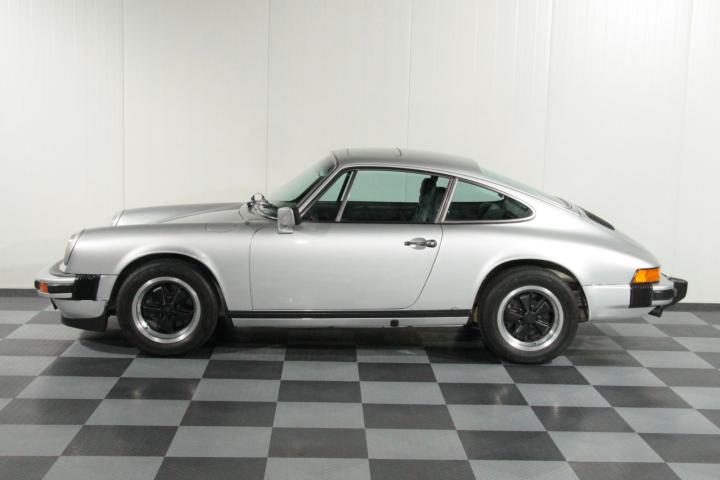1977 Porsche
911
S
Price on request

|
Body
|
Coupe
|

|
Transmission
|
Manual
|

|
Exterior Color
|
Silver metallic
|

|
Upholstery
|
Leather
|

|
Steering
|
Lhd
|
Call for price.
Porsche 911S 2.7L.
Original car, still largely in original paint
One of the few truly original 911s remaining from the 1970s. The silver metallic paint beautifully contrasts with the green-tinted windows and the black details on this car. The largely original paint gives the car a lovely patina. This matching-numbers 911S, which was originally delivered in the United States, was brought to the Netherlands around 10 years ago. During its time in the U.S., the car spent a long period in storage. It was ordered by an enthusiast back in the day with options like the electric sunroof, 15” Fuchs alloy wheels, electric windows, black trim, and a sport steering wheel.
The car is still complete with all accessories such as the original toolkit, jack, original spare wheel, and compressor. The accompanying document folder contains the original booklets, the Porsche birth certificate, a copy of the title, appraisal, and various invoices.
Recently, the 2.7 engine was overhauled by Porsche specialist Speed Service in Sittard. After the engine and gearbox were installed, a major service was performed on the Porsche.
This 911S has a Dutch registration.
Accessories
Original manual
Original service manual
Original manual pouch
Jack
Compressor
Toolkit
Original spare wheel
Birthcertificate
Documentation binder
History
In august 1973 the 911 (150 bhp), 911S (175 bhp) and the 911 Carrera (210 bhp) replaced the older T-, E-, S- and RS-models. As from model year 1974 three significant changes were made. In 1974 was the introduction of impact bumpers to conform with low speed protection requirements, these bumpers being so successfully integrated into the design that they remained unchanged for 15 years. In 1974 the engine size was increased to 2687 cc giving an increase in torque. The use of K-Jetronic CIS Bosch fuel injection in two of the three models in the line up, the 911 and 911S models, retaining the narrow rear wings of the old 2.4, now had a detuned version of the RS engine producing 150 and 175 bhp respectively.
The 911S yielded 10 bhp more than the E-model from the year before. Because the 911S model was fitted with the new injection system, the S also had a broader torque that reaches its maximum value (235 nm) at, a lower, 4000 rpm. This improved the drivability of the car considerably since the driver needed less gear changes. The gasoline consumption was improved also. In the United States there were other emission demands so the 911S models in the US had a reduced power of 165 hp.
As demand for more power continued Porsche chose for using the 3.0-liter engine of the 930 Turbo but without the turbo charger in all 911 models from 1976. This meant, unfortunately, the end of the 2.7-liter engine as it was not further developed. The 2.7 liter boxer engine remained until 1977 in production after which it was replaced by the more powerful 3.0L engine.




